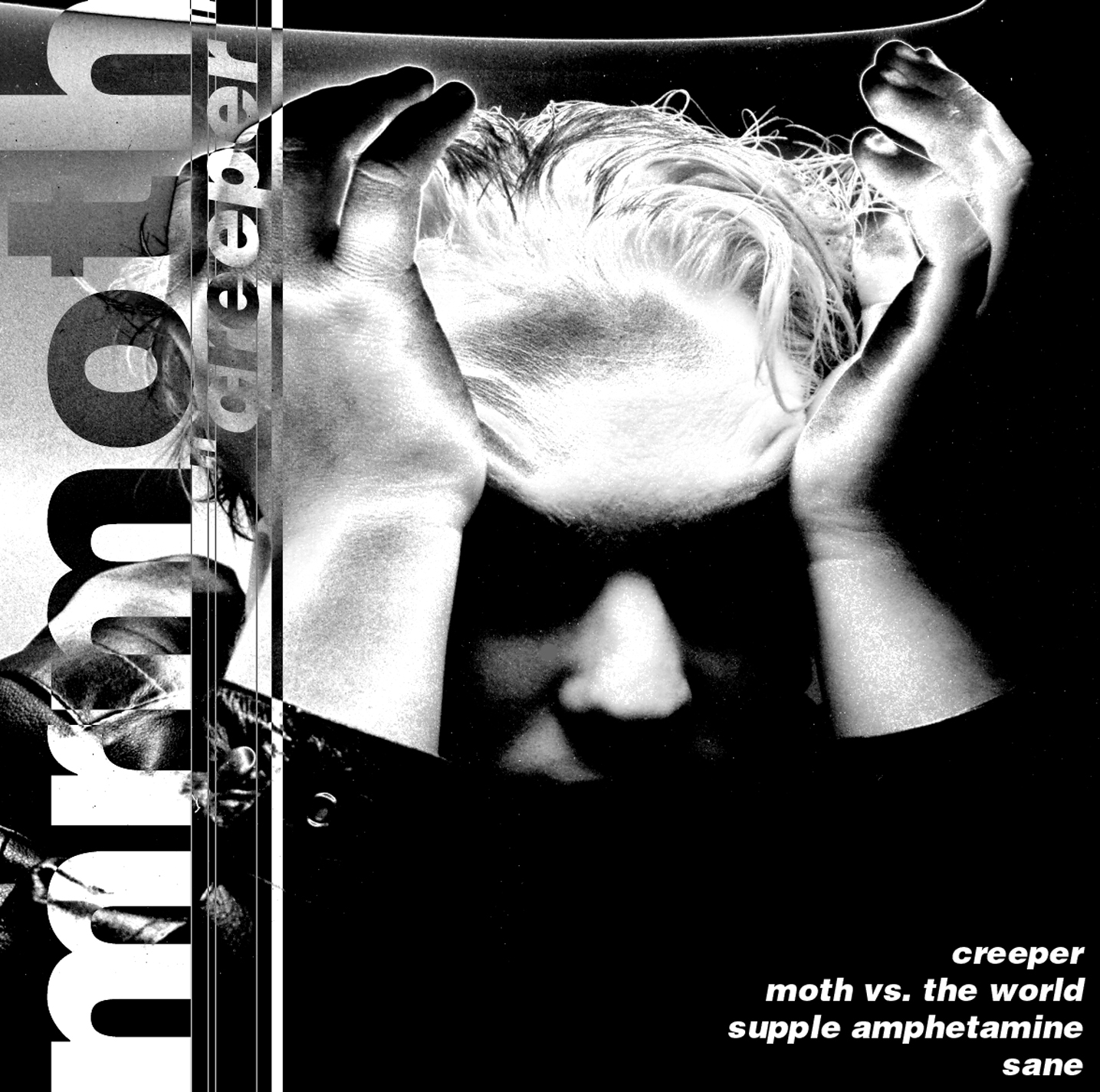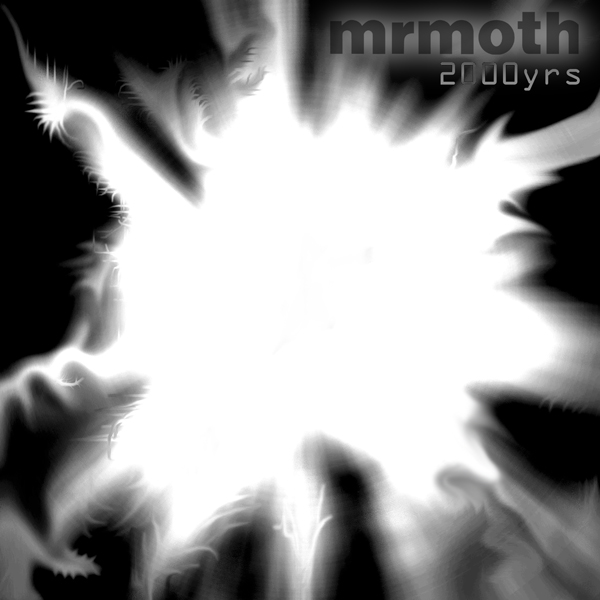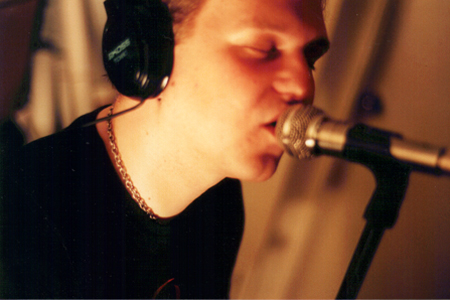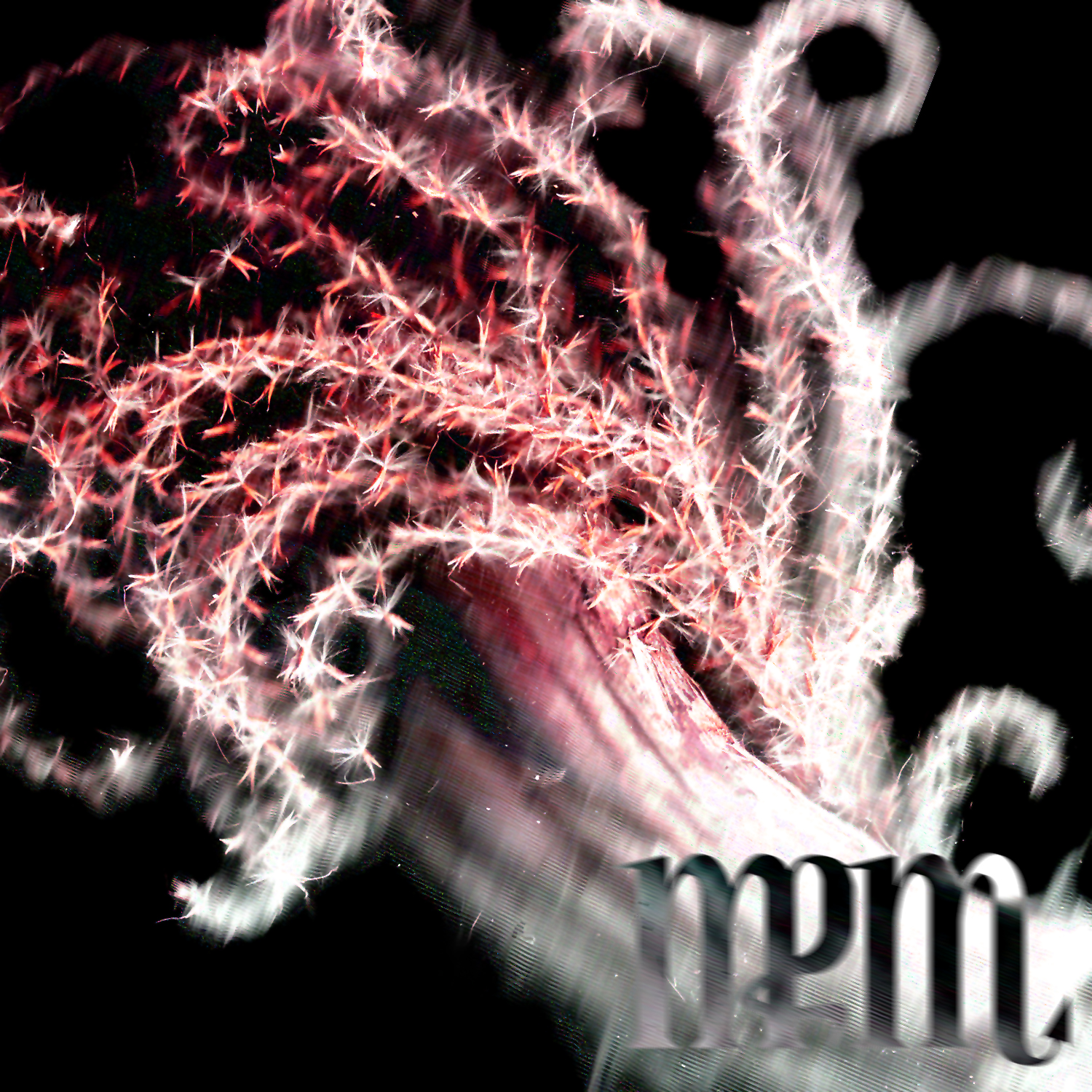
mrmoth is the solo musical project of fine artist Michael Bird. Bird began the project in the spring of 1996 as a means to explore electronics and sampling in his music after failing to find collaborators interested in anything more adventurous than traditional, garage rock.
A lengthy period of making four-track cassette recordings led to the eventual first release, 1997’s The Creeper EP.
“All of the early bands I had played in were more punk, which of course, carries a heavily DIY ethic. I wasn’t going to wait for anyone to give me permission. I was ready to go and I just started writing and recording until the songs started to achieve a quality level I could stand behind. I recorded about 10-12 songs during that period and released four of them via homemade cassettes, circulated through consignment and selling to people I knew.”

It was very much a learning process. I failed a lot, predictably given how few resources I had available in retrospect. I was a classic, working-class underachiever. More, I knew absolutely no one who could teach me about synths or programming, so everything was self-taught. I collected equipment very slowly and used more sampling than programming in those days, because samplers were cheaper and more accessible than programmable synthesizers. All of my keyboards were entry-level Casio and Yamaha affairs. Drum beats were often samples or worse yet, presets. Still, I managed to achieve enough I could be proud of to continue moving forward. The songwriting was really what was evolving in those days and I burned through a lot of bad on my way to getting to something acceptable.”
Having relocated to Washington state in July of 1997, Bird began work on something more adventurous and ambitious. “I wasn’t really capable of playing shows on my own given what I was doing at the time and I really thought I had to have a band to justify the expense of recording professionally, so I just tried to evolve my home recording craft.”
“As DAW systems were still in their infancy, and certainly not priced at all for the hobbyist, I needed to find a way to push my sound quality and add layers over what the four track experiments allowed. So I began recording direct to digital CDs, adding layers by overdubbing additional instruments. I would program the basic backing and then play each additional element live over the top. It wasn’t the most technically advanced method, but I could certainly manage a richer sound than what the 4-track recorder allowed for.”

The outcome of this work was the first proper mrmoth album, 1999’s the ether. Bird had employed the help of area musicians, including Bryan Leighty, who played on two songs on the album, “Midrashim Gone Velvetine” and “The Ether, pt 2,” the second of what has become an ongoing series of songs that have wound their way through the mrmoth catalog. The album featured a versatile selection of songs, deftly veering from ambient, to cabaret-style saloon songs, to experimental drones, to acoustic ballads, to full-out, industrial rock.
“I’ve always listened to a lot of different kinds of music and what I couldn’t do technologically ended up forcing me to really push my resourcefulness, calling on and deconstructing different styles of music as a starting point. Despite that first album’s very-apparent shortcomings are some of my proudest moments as mrmoth and it’s all down to what a little persistence can draw out of you.”
The sound evolved significantly with mrmoth’s next album, Resurrected, due in large part to more changes in Bird’s personal life.
“I relocated back to Kansas again, ostensibly to solidify my graphic design education. In doing so, I had resolved that I would try to turn what had been a series of fleeting collaborations into a proper band. Almost as soon as I had gotten my truck unpacked, the first album was released. But even before it was even out, I was already working on the next record.”
“We played a show together in October of 1999, playing ‘The Ether, pt2’ in which Will sang an improvised operatic vocal over the breakdown. We rounded out the set with an acoustic ‘Everything I Am Is a Lie,’ with Will supporting on bass guitar, and we ended the set with ‘Creeper.'”Before moving to Washington, I had collaborated with Will Browning, who played guitar on the title track from ‘Creeper.’ That song remains one of my favorites and I was very optimistic that we could make something even more compelling given some focus.”
The pair rolled right into recording new material, the first piece of which arrived in the form of “2000yrs,” released early the next year.
“Will had the bassline programmed on his drum machine. I used that as a starting point and played the drums manually over the top to create the loop live, if I recall correctly. I then went away and did everything else over the top of that in digital multitrack. I had everything but the guitars finished when Will came in next. He tracked the guitars in one session and initially, he seemed really pleased with what I had done with his bassline, but I later heard differently.”

Finishing the track, mrmoth released it as a single, with two re-recordings of Creeper EP songs as b-sides, including a lusher retake on their initial collaboration, “Creeper,” and a fully orchestrated version of “Supple Amphetamine.”
“I had ‘Some Angels Have Horns,’ and the various versions of ‘This Is What You’ve Waited For’ and Will supplied guitar parts on those. Before we could go much further though, Will confronted me, audibly upset about what I had done with ‘2000yrs.’ I think he felt I had stolen the idea from him, as he felt he had a pretty concrete idea about what he wanted to turn it into. I apologized for upsetting him and offered to pull the single, but he declined, apparently resolved that quitting the band was enough. Nonetheless, I was back to square-one.”
In attendance at the afore-mentioned October performance was one Jason Torrens. “Jason used to come in to the record store I was working at part-time. He was generally complimentary about what he had seen from our performance, though he was always quick to point out that he thought it should be heavier. I didn’t disagree, and after he’d mentioned that he had a guitar and had been practicing a lot, it eventually dawned on me that Jason was pitching himself to be in the band. More than anything, Jason made me laugh as he was hyper and extremely irreverent. Everything I had done in collaboration to that point was done with friends who I just got along with. I asked Jason to be in the band without hearing him play a note. It worked out, luckily.”


“By that point, I had the title track from ‘Resurrected’ pretty far along, so I had him track some additional guitars on that. It was pretty clear that this would be a better direction, as it already felt more original and creative over what I’d done before. I was also very excited about the visceral elements that were emerging in that track. A lot of the songs that preceded that were good ideas but didn’t always move the listener. That song was a turning point for the scale and ambition of mrmoth and it was ultimately down to responding to Jason’s provoking me to make harder music.”
Still, Bird wasn’t sure this version of mrmoth was complete. Aware that his responsibilities to keyboards and vocals would keep him busy in any live context, Bird resolved to add at least one more member of the band.
“In those days, Jason and I were both pretty limited as guitarists. We were very punk stylistically, which worked well for ‘Resurrected’ because that song was supposed to be really unhinged. But my ideas were starting to ask for more sophistication than Jason or I could supply. We needed someone who was a bit more studied musically. And then I met Matt Kosinski.”
Kosinski was fresh out of high school and had been playing in an area band that had once performed in-store at the afore-mentioned record store. Within a few month, Kosinski had started working at that same record store with Bird.
“Matt had chops and could play really well. Jason and I gave him a lot of grief in those days because his musical influences were more pop and soft rock than what we listened to, but it was apparent his softer tastes had lead him to play better. He started to play with us and within a month, we had ‘Blisster.’ That solo still knocks my socks off.”

Part of the point for adding permanent members of the band was that the band should play live and before long, Resurrected was finished and ready to be promoted. While an early, aggressive presence online had brought international attention already, Bird was eager to get the live band on its feet. It began promisingly enough, but ultimately fell flat.
“We did an eight song set upon the release of Resurrected at a local bar by ourselves. It was meant to be a sort of release party… at which we had no CDs for sale! But we had a strong enough turn out. I thought we were off and running, but the prospect of getting gigs in any city with any band is tough enough. As widely accepted as electronic music is now, even as a hybrid band, we used to get endless grief about the lack of a drummer in our band. People still thought the drum machine was meant to be a replacement for a drummer instead of its own sound. And this is at the height of the whole ‘electronica’ movement. In the middle of the midwest, when Creed and Limp Bizkit were sadly still ascendent superstars, there was little hope for a weirdo band from Emporia, Kansas with keyboard drums getting gigs locally, much less putting together a tour of some kind.”


“But just as it was at the beginning, I wasn’t looking for anyone’s permission or validation, so we just kept soldiering on. And anyway, it burned up the guys in the band that they were playing songs live that they didn’t play on the recorded versions. So we went straight back in and started the next record. It was instructive to know what they were capable of by that point too, because it meant I could pretty easily write with their skillsets in mind.”
One song that immediately jumped to the fore was a song that Bird had envisioned as “The Marquis de Sade meets T. Rex.” We had a few covers by that point, but I had been hoping to do a live medley of ‘Seek and Destroy’ paired with ’20th Century Boy.’ While I was working on the rhythmic direction of it, a new song had started to come forward that didn’t sound like either of those songs. Within a couple weeks, the song “Everybody Wants to Fuck” was recorded and being mixed.”
But before it could even be finished and released, the song made an inauspicious debut as it was distributed online and shoved in front of an audience that didn’t want it.
“It was the early days of file sharing. I was a big fan of the bootleg community as I had been a Jane’s Addiction tape trader back in the day, and BearShare was where a lot of the bootleg community had set-up as a center point. I had pulled down an audience recording of a Nine Inch Nails show and accidentally saved a rough mix of ‘Fuck’ into the same directory. Someone who had pulled down the folder from me decided to circulate that track on peer-to-peer as a proper Nine Inch Nails song, going so far as to rename it. The meta tag for the mp3 was intact, so when everyone got mad about stealing the wrong song, they came after me. And I had a published phone number and address, so they knew exactly how to find me.”
It wasn’t all bad, as the band made fans from around the world out of the experience. “I could have done without the harassing phone calls though,” Bird counters. “The cowards always hung up when I answered, but they were keen to leave me answering machine messages when I was out.”
“I was annoyed more than anything that the implication emerged that electronics plus guitars meant we were trying to knock off Nine Inch Nails, which is a charge we heard often in those days. Without question, I had clocked Reznor – and Marilyn Manson as well – but it was partially so that I could move in a different direction, and partially because I thought it was appropriate to take the biggest name closest to what we did and put them in our sights. As ludicrous as that is to hear me say, it’s the kind of naive determination you have to have in order to get anywhere with anything. And naive I was.”

“Regardless, the song was written from the voice of the Marquis de Sade with a title that referenced Everybody Wants to Shag the Teardrop Explodes by the band of the same name, which no one ever worked out. It’s the only cover design that has the name of the record above the band name. I was trying to interject a bit of fun and humor into the band. I took it all as a bit of an insult that I was supposed to be mimicking a guy who wrote song after song about hating himself as it’s conceptually the opposite of what this band was always meant to be about.”
“Paradoxically, we actually got a lot of mileage out of it, as suddenly we started getting ridiculous traffic on our site from all around the world and especially from Belgium, of all places. It was nice to have some people be really supportive on the back end of the experience, but it wouldn’t be anyone’s preferred way of debuting in front of a large audience. The version that was widely circulated wasn’t even finished. I had only made the mp3 to share with a couple friends, looking for feedback. I ended up getting a lot more of that than I really wanted, unfortunately.”
With the inadvertent attention putting some wind to the band’s collective backs, the clock was ticking to deliver on the new attention. Over the course of the following months, the trio worked tirelessly to deliver a new record that would capitalize on the new, albeit accidental notoriety. That record would become Among the Swarm.
TO BE CONTINUED…